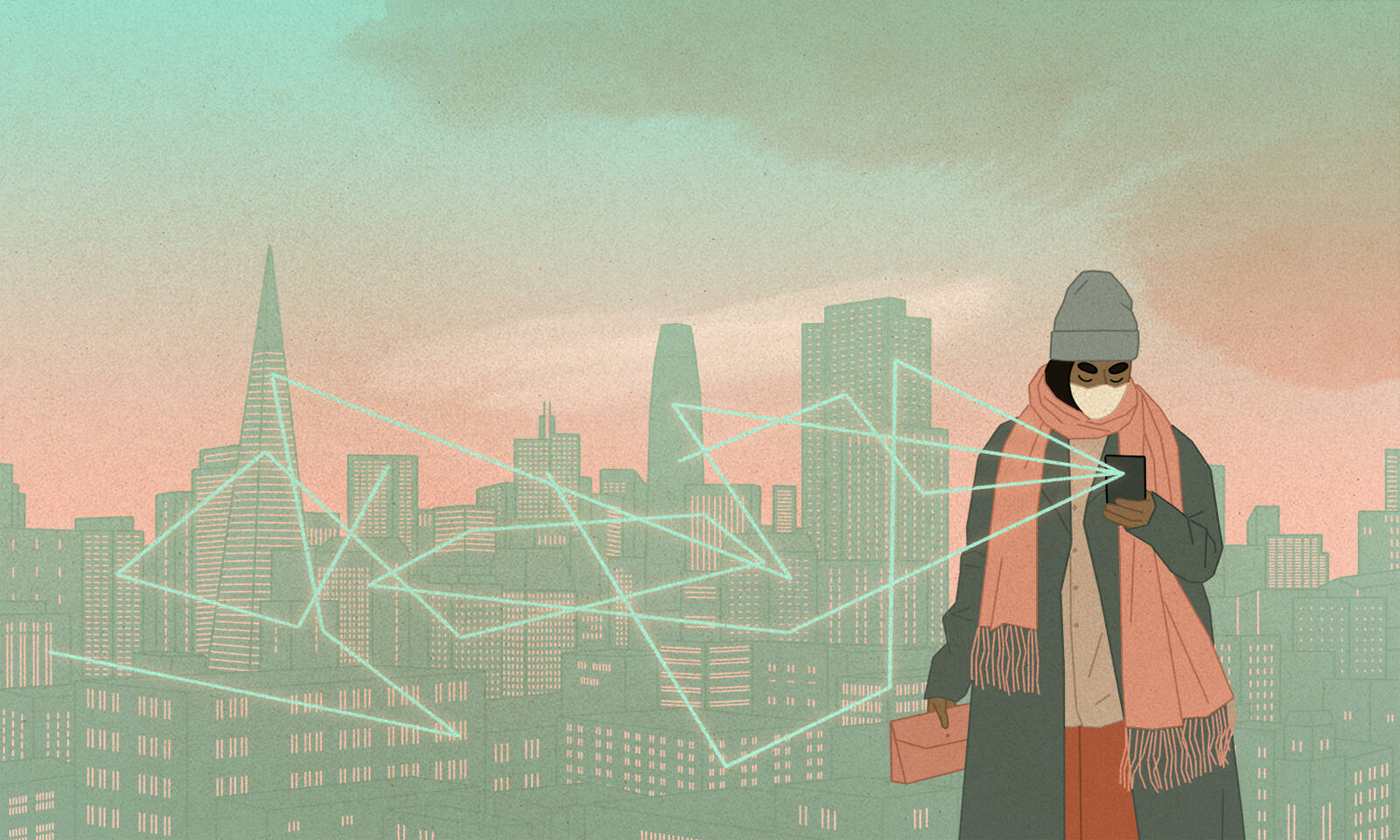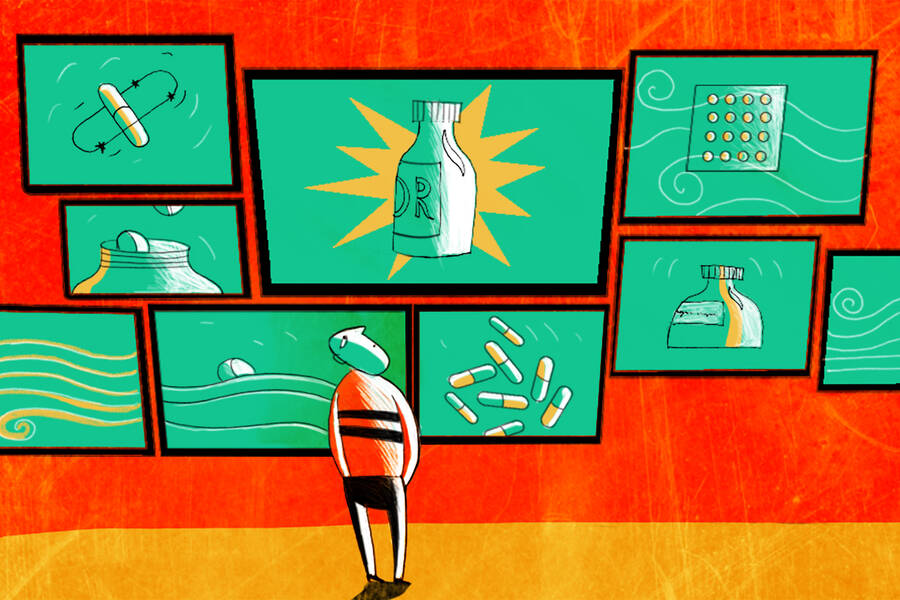Policy Mar 1, 2021
Contact Tracing Is Failing in the U.S. Here’s How to Fix It.
For starters, turn responsibility over to local organizations and communities, where trust is higher.

Lisa Röper
As COVID cases surged across the U.S. last December, the CDC reckoned with a stark truth: contact tracing couldn’t be scaled up to match the virus’ spread.
The practice of contact tracing—or identifying, assessing, and managing people who have been exposed to a disease—is an essential tool for controlling outbreaks by interrupting a disease’s transmission chains. And indeed, combined with lockdowns and mask ordinances, some countries have had great success using contact tracing to reduce outbreaks.
So why have attempts to institute it failed in so many other countries, most notably the U.S.? And given that COVID is likely to be with us in some form for quite a while, are there ways to make contact tracing more effective here?
Sarit Markovich, a clinical professor of strategy at the Kellogg School, says that contact tracing, at its core, hinges on trust. This means that trust will need to be at the foundation of any successful efforts moving forward. This includes building trust in the technology, specifically in terms of false positives, trust that information will be kept private, and trust that people will not suffer consequences for self-reporting.
Here, she offers her thoughts on where contact tracing can fail, and how to do it better.
Consider Your Social Makeup
Contact tracing requires individuals to share private information in service to the public good. In considering how to solicit this information, it helps to understand the difference between centralized and decentralized societies, Markovich says.
How Technology Can Help
Not all contact-tracing technologies are created equal.
GPS, which was the first option early in the pandemic, works by extracting phones’ location data. But it can’t pinpoint a precise location or account for the passage of time—both of which are critical variables in determining exposure risk, Markovich says. Research shows that on average, GPS’s accuracy is off between seven to fifteen meters. This may be negligible in other contexts, but with contact tracing, inaccuracy can profoundly impact people’s lives.
“With GPS, the standard error is very large,” Markovich says. “It doesn’t account for space or time very well. So if you go to Sam’s Club and you’re all the way across the store [from an infected individual], you may get notification that you need to self-isolate—though, in essence, you were not in close proximity to the infected person. In contrast, if someone sick gets into and out of an elevator just before you, but they press the button that you then press, the GPS technology won’t capture this”—leading you to think you’re in the clear when you have actually been exposed.
There is also the privacy issue: people may not want their communities or employers to know where they are going at all hours of the day.
Bluetooth technology works by enabling phones to exchange signals with other nearby phones. As phones scan each other, they exchange anonymous data, including identification codes, approximate distance, and contact duration. An app then issues “exposure notifications” to users who were in close proximity for at least 15 minutes.
This technology has a big upside: it’s more accurate (unless someone else uses your phone), and it protects privacy better since it tracks proximity to others rather than location.
But because both are opt-in services—users enable their devices and agree to notifications—contact tracers relying on phone technology are only going to see a fraction of any user’s contacts.
Encouraging people to trust the technology—and improving its accuracy—will make them more likely to comply with quarantine requests. Because who wants to quarantine for two weeks when they suspect a false positive?
Read moreIn countries with centralized governments, like China or Singapore, contact tracing is mandated and compliance is universal. Governments track people’s movement through a national phone app or wearable tokens, which people scan as they move between locations. Noncompliance is heavily fined. In general, these societies prioritize collective welfare over individual freedoms, like privacy.
“If the government makes you do it, you do it,” Markovich summarizes. “And now in many of those places, people are back to their offices and normal life.”
But in democratic societies where government is decentralized, individual rights can be in tension with public health, Markovich says. Strategies that are effective in centralized societies are less likely to work in decentralized ones.
In Israel, for example, the government mandated digital contact tracing and levied hefty fines for noncompliance. Given the country’s population size and relative homogeneity, it seemed as if national contact tracing would work much like it did in Singapore, Markovich says. But people objected to being tracked. They turned off or left their phones at home, and the initiatives have been unsuccessful.
“In decentralized societies, people do not completely trust the technology and do not completely trust authorities knowing where they are,” Markovich says. “They want privacy.”
Lower-tech approaches, where public health workers individually interview exposed individuals about their contacts, are unfortunately no more promising.
In Israel, for example, a volunteer-led startup tried to launch in-person contact tracing as an alternative to the government’s digital model. The initiative stalled when it turned out residents did not want to share personal information with strangers. That same skepticism exists in the U.S., where 41 percent of people in a recent Pew survey said that they wouldn’t speak to a public health official who contacted them by phone or text.
“The goal is to make people get used to contact tracing in a context that’s not scary and in a way where its effect on others is not negative but positive,” she says.
Keep It Local
For now, Markovich believes that in decentralized societies, national contact-tracing initiatives won’t work. A better option: hand the lead over to local governments and organizations.
At this smaller scale, Markovich says contact tracing becomes easier to centralize. Initiatives can be heavily encouraged or even mandated, and enforcement is also easier when it is tied to the social pressures of local communities or the requests of employers.
“Organizations and municipalities have an advantage because there’s more trust involved,” Markovich says. “They can centralize and mandate it, because if you want to be part of an organization—an employee at your company, for example—there are rules you will have to comply with.”
Over time, Markovich believes that the number of organizations and communities that mandate contact tracing will grow, especially as more local models—a church, a factory, or a city whose leaders have established trust—start to show success.
Reward Disclosure without Punishing Exposure
She also advises that local communities and organizations think carefully about how to encourage people to disclose their contacts. This means, first and foremost, minimizing the negative consequences on all parties: those who have tested positive and are disclosing their contacts, as well as the individuals whom they have exposed.
Here, technology has a powerful role to play. Markovich observes that in some communities, COVID-positive people are blamed for spreading the virus. This practice of “COVID-shaming” could make them less likely to self-report their contacts.
“This is where technology helps,” Markovich says. “You want to use technology rather than rely on people to tell you who they’ve been in contact with or that they’re sick. It’s not about self-reporting. The technology tells you.”
But despite the benefits of technology that can automatically notify people of exposure (see sidebar), Markovich also notes that the human element shouldn’t be ignored. Follow-up calls from trained professionals will provide an opportunity for people to ask questions about next steps, express concerns, and learn how to self-isolate, if required.
“The human part is important,” Markovich says. “Technology is great in terms of detection speed, but human contact creates trust.”
And whatever the technology used, if people do have to quarantine because they’ve been exposed to COVID, employers should assure their employees that they will be compensated for the time they self-isolate. Markovich cites incidents in which employees who have been exposed to the virus went to work because they lacked paid sick leave or feared losing their job. Since some sectors are at higher risk for infection, like grocery stores, the government should share these costs with organizations.
“We need incentives to encourage people to tell the truth and feel comfortable staying home,” Markovich says. “If you know that you’re going to be compensated even if you’re home, then you’re definitely going to feel more comfortable self-reporting and self-isolating.”



